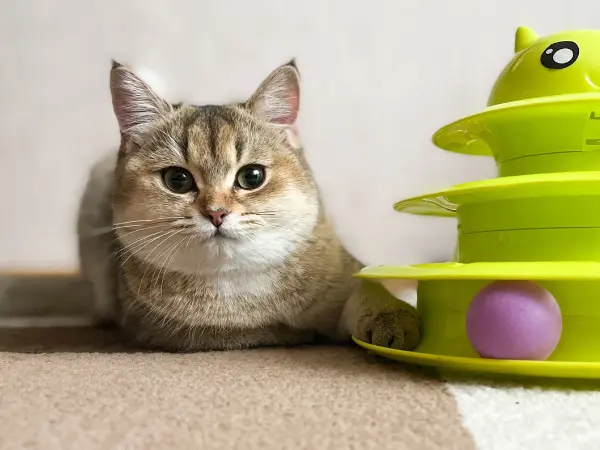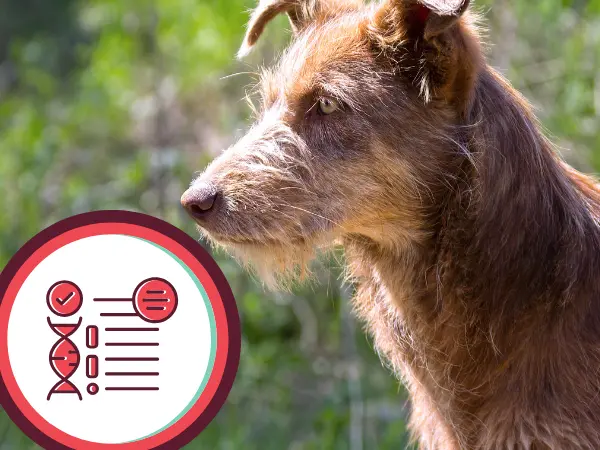Have you ever wondered what your cat is thinking? Though it may be unlikely to know exactly what goes on behind those majestic glowing feline eyes, cat parents can get a sense of how their furry friend is feeling. The key is to understand cat behavior and cat body language.
Understanding Your Cat's Body Language
Knowing when your cat is happy, playful, or anxious will help you interact with them in the best way — and ensure that they are getting what they need. Read on to discover more about cat behaviors and the emotional states that they are typically associated with.
A Note About Interpreting Cat Behavior
While the following general guidelines are good indicators of what your cat is feeling, it's important to consider the context. Factors ranging from what environment your cat is in to when it last ate can influence their behavior.
Cat Body Language When Happy & Relaxed
We all want our cats to be in bliss. A calm cat can relieve your stress, as you don't have to worry about your feline friend being anxious or exhibiting behavioral issues. A cat in a relaxed state also tends to be more receptive to petting or snuggling. If you notice that your feline friend appears particularly sleepy or calm, there's a good chance that it's happy.
Here are more specific indicators of a content cat:
- Head: A cat instinctively swivels its head around to observe its surroundings. If it determines it's in an unthreatening environment, its head tends to be still.
- Muscles: Similar to humans, cats who aren't experiencing stress tend to have loose, relaxed muscles instead of holding onto tension.
- Body: When a relaxed cat lies down, it'll be more likely to lie on its side and show its belly. A relaxed cat may also sit with its back straight and head up.
- Ears: A calm cat will typically keep its ears in a natural posture, which is forward and relaxed. Its ears might twitch in response to noise, but they won't be constantly moving.
- Eyes: When your cat is happy, its pupils tend to be at their usual size. You might also notice that its eyes are halfway closed as if it's about to fall asleep.
- Tail: Happy cats allow their tails to extend, lie flat, and become still.

Cat Behavior When Wanting to Play
While cats can be evasive, they'll let you know when they're ready to play. Playful felines might appear very energetic, grab a toy, or even follow you around the house.
Here are other indicators that indicate its playtime:
- Body: A playful cat might take up a pouncing stance with its rear end in the air and front paws splayed out in front of them.
- Ears: A cat might demonstrate playfulness by keeping its ears up and forward.
- Eyes: If your cat is feeling playful, its pupils might dilate to create a wild look.
- Tail: The tail of a playful cat is usually in the air and flicking around, though it might be down if the cat is in a pouncing stance. If you have a kitty, it might exhibit playfulness by chasing its tail.
Cat Body Language When Scared or Anxious
As fearless as cats might appear, they're subject to worries and anxieties just like we are. Here are some signs that indicate you should give your threatened cat some space:
- Body: If a scared cat isn't already hiding from you, it might arch its back or assume a crouched position. Fur standing on its end is also an indication of your cat going into fight-or-flight mode.
- Ears: A scared cat's ears tend to swivel constantly to analyze potentially threatening noises. Its ears might also point sideways or lie flat.
- Eyes: A scared cat also evaluates its surroundings by being watchful and keeping its eyes wide open.
- Tail: If your cat is anxious, it might curl its tail around its body for protection. It might also hold its tail rigid in the air.
Other Cat Behaviors You Should Know
Here are some other feline behaviors that can help you better understand your cat:
- Rubbing: It's common for cats to rub up against everything from couches and walls to people. This behavior can be a sign of affection or indicative of the cat marking its territory.
- Kneading: Also known as "making biscuits," kneading is when a cat flexes its paws up and down on you or an object. It's a comforting behavior that cats learn as kittens and can be a way to express pleasure or soothe anxieties.
- Changes in normal body language: A cat might exhibit sudden changes in normal body language such as droopy ears or glassy eyes. These signs can be indicative of illness, so book an appointment with Sploot Veterinary to ensure your cat gets the care it needs.

Understanding Cat Vocalizations
You can gain even more insight into your cat by listening to its vocalizations. Felines make tons of sounds that can help you understand their feelings, though analyzing the sounds alongside their behaviors can help you make a more accurate analysis.
For instance, purring is a sign of pleasure, but it can also be a cat's way to soothe itself when it feels stressed. A usually quiet cat who starts to purr a lot might be in pain. If your cat chirps or trills, it might be expressing joy or trying to get your attention. A growl or hiss often indicates that the cat is being territorial.
Final Thoughts on Cat Body Language & Cat Behavior
We hope you enjoyed this article on cat body language. By knowing more about cat behavior, you’ll get a better understanding of your feline friend’s emotional states and needs. If you have specific questions about unexplainable, sudden, or problematic behavior in your cat, reach out to us today!
Sploot Veterinary Care provides all-in-one veterinary care, with primary care, urgent care, and emergency vet services all under one roof! We have multiple convenient locations in Denver, Chicago, and Colorado Springs.
Our doors are open 365 days a year, for extended hours. Schedule a consultation online today or through the Sploot Vets app.
Orange Cat by Gabriel Millos is licensed with CC BY-SA 2.0\






